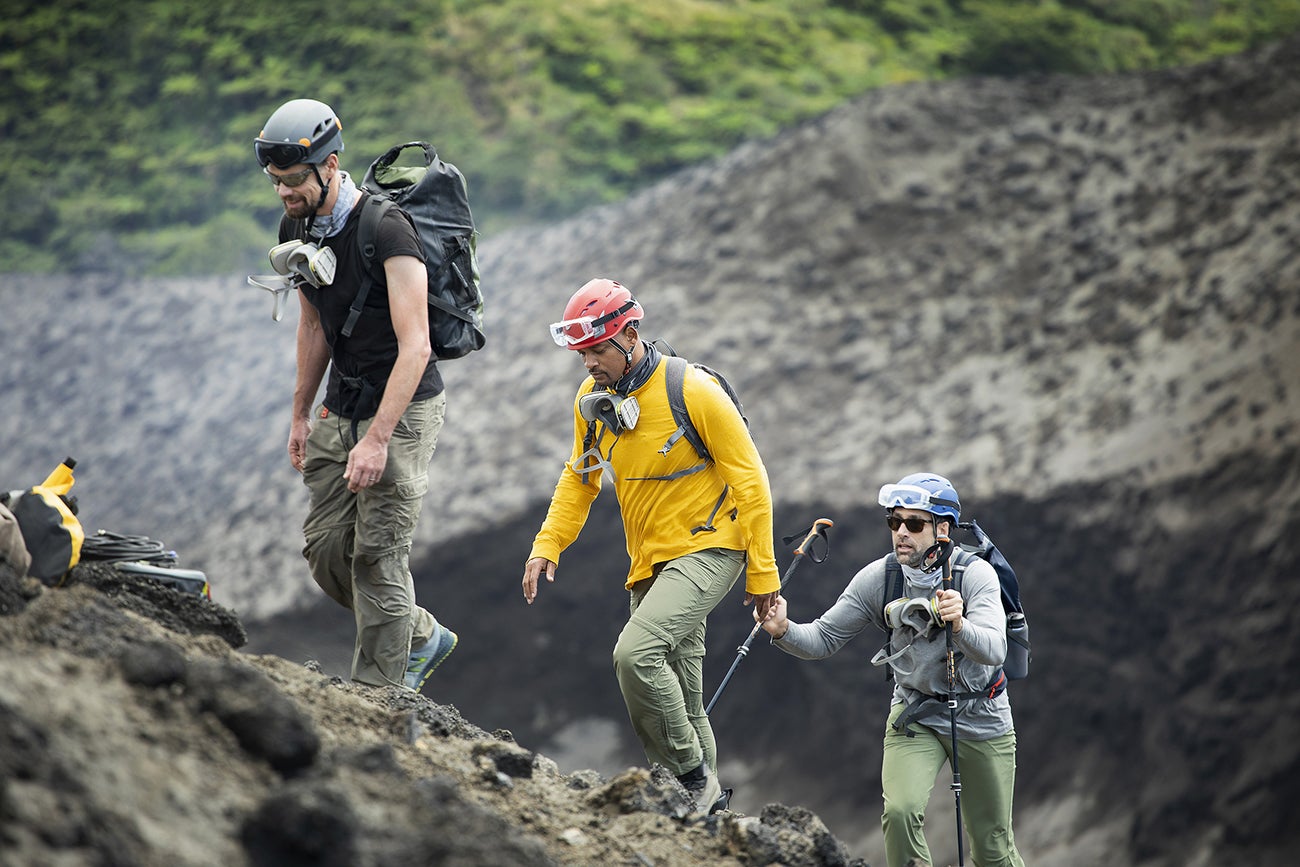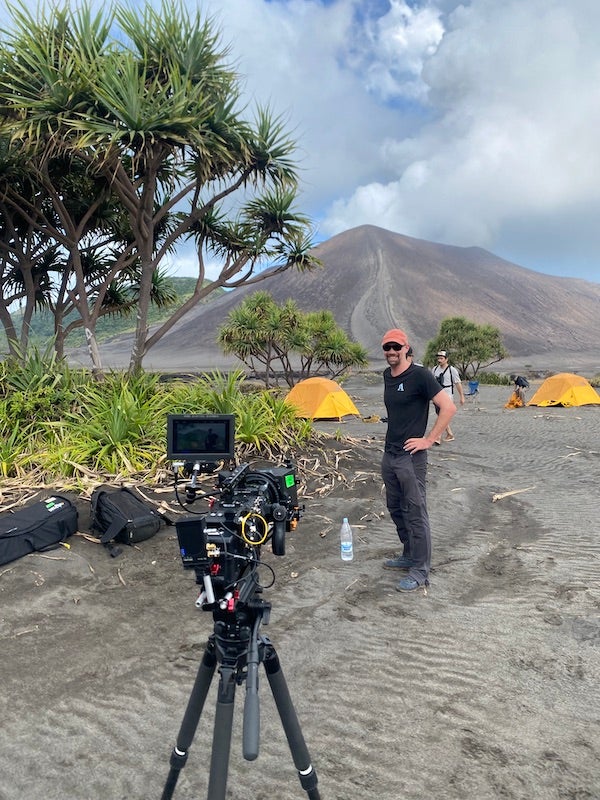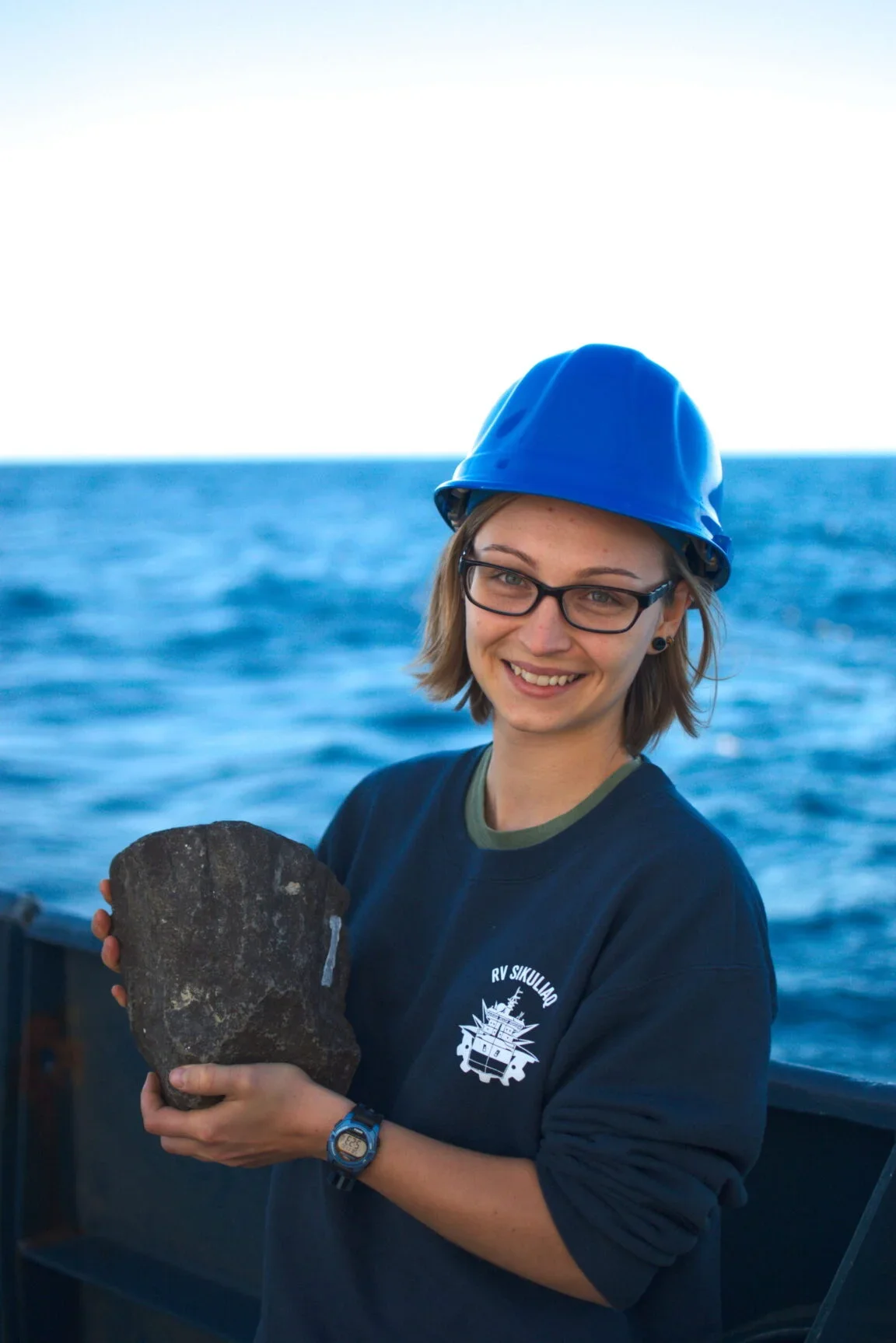Learning is all about asking questions, and no one asks questions better than children. Boise State is home to more than 1,400 faculty members and researchers who are eager to answer these amazing questions.
Today, geophysics professor Jeffrey Johnson and geoscience postdoctoral research fellow Janine Andrys tackle three questions asked by kids: “Why do volcanoes explode?” “Why are they so loud when they explode?” and “How hot is lava?”

At Boise State, Johnson develops special sensors with his students to hear volcanic sounds that humans can’t hear (follow them onInstagram @infravolc). Over the past 25 years, he has visited and studied more than 20 volcanoes on all seven continents. He is a National Geographic explorer and even took actor Will Smith and explorer Erik Weihenmayer to study the live Yasur volcano in Vanuatu for the pilot episode of Disney+ National Geographic series “Welcome to Earth.
Andrys studies the chemistry of lavas that have erupted from volcanoes under the ocean and on volcanic islands. She has visited many places in the Pacific Ocean, including the Galápagos and the East Pacific Rise to collect lava samples from volcanoes more than two miles under the water.
Question: Why do volcanoes explode?
Johnson says this is a simple one-word answer….”gas.” Molten lava underground (called magma) has a lot of gas that will erupt explosively into the air. But not all volcanoes will explode. Some volcanoes have magma without much gas and will ooze onto the ground (geoscientists call this an ‘effusive eruption’).
The major gases found in magma are steam (water), carbon dioxide and sulfur gases. They are dissolved in the magma within the Earth but then separate out as bubbles and can expand explosively at the surface.
Deep inside the earth most magma has lots of gas, but much of it can be lost over time. Think of a can of soda. When opened, the fresh can might spray all over the place. But then, after the carbon dioxide gas is spent, the soda becomes flat and doesn’t explode anymore.
This is why some volcanoes begin to erupt explosively and then over time will become more effusive if the eruption continues.
Question: Why are volcanoes so loud?
Not all volcanoes are loud, Johnson said. It all depends on that gas again. Many volcanoes are fairly quiet if they erupt lava flows (effusion), as opposed to exploding.

But if they explode, their incredible pressure can create great blasts as they compress the air next to the vent (the hole in the volcano where lava and gas escape). This compressed air, transferred as sound, can travel thousands of miles.
Some volcanoes can sound like booms, roars, or thunder. Other volcano sounds are so low in frequency that humans can’t hear them at all, and they can only be detected with specialized microphones. This is what is known as infrasound, which are sounds below 20 hertz (Hz = cycles per second).
Big volcanic explosions can make infrasound that travels all the way around the world. The most famous examples are from Krakatoa in 1883 and the Hunga Tonga in 2022.
It’s crazy, but when the Hunga Tonga volcano exploded out at sea in 2022, we had special sensors set up in the mountains near Stanley, Idaho. The infrasound was so strong that it traveled around the world twice, and each time our infrasound sensors caught it. Smaller eruptions also generate a lot of infrasound and some examples of those eruptions and the sounds they create can be found at on Instagram at @infravolc.
Did you know that elephants, rhinos, whales and other creatures can also make infrasonic sounds?

Question: How Hot is Lava?
Lava erupts onto the surface at places with volcanic activity, Andrys said. On Earth, volcanic activity can happen in the interior of tectonic plates, like Yellowstone or the Snake River Plain, but is more commonly found at places where plates are either colliding–such as the Cascade volcanic arc in western North America (Mount St. Helens is an example of a Cascade range volcano)–or pulling apart, such as the volcanic ridges at the bottom of the Pacific Ocean.
The temperature of erupting lava mostly ranges between 1470oF and 2190oF– approximately the temperature range of a roaring bonfire.
The temperature of lava mainly depends on the elements it is made of (called the chemical composition) and how much cooling it experienced before eruption. The temperature of the Earth increases with depth, so when magma forms, it will be at its hottest temperature. As the magma moves through the Earth’s crust towards the surface, it will cool and crystallize minerals.
So, when geologists measure the temperature of a lava on the surface, it will usually be different from the temperature of the magma when it was formed underground.
This observation is the topic of an entire area of geological research, called thermobarometry, where scientists conduct laboratory experiments and computer models to develop methods of calculating the temperature of magmas before eruption using the chemical compositions of the lava and its minerals.

Submit a question
Have a question for a Boise State researcher to answer?
